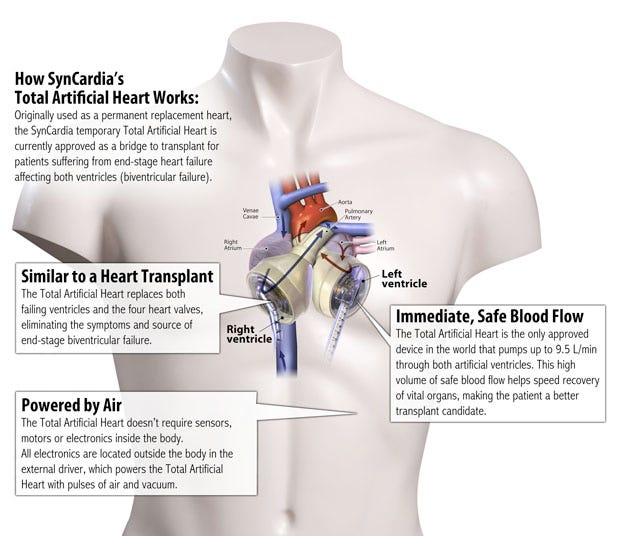Trivia Tuesday: What material, first developed to make elastic thread, eventually became key in the development of SynCardia's artificial heart?
December 13, 2022

When SynCardia Systems set out to develop the world's first artificial heart, one of the key challenges was finding a material that was up for the job.
The company eventually determined that segmented polyurethane was ideal for the task. After testing the material against an array of different materials, the company found that nothing could beat segmented polyurethane when it came to stretching, strength, and shape memory. In particular, the biocompatible material has remarkable flex life properties, making it well suited for use in artificial hearts.
So, what happens when the supply of the material becomes threatened? As MD+DI reported in 2014, SynCardia did encounter supply issues with segmented polyurethane in the past, which prompted the company to look for alternative materials. SynCardia tried working with several different companies that specialize in materials, but nobody had a material that could beat segmented polyurethane.
That's when SynCardia decided to buy the formula for the material, the equipment to make it, and everything else needed to make segmented polyurethane in house. The company built an entire team dedicated to nothing else, just making the material for the SynCardia Total Artificial Heart.

The humble beginnings of segmented polyurethane
It's hard to imagine, but the same material that is so critical to making the artificial heart was actually first developed to make elastic thread. A 1967 research paper published in Science hailed the material as a promising new elastomer for biomedical applications, however, and in the late 1960s segmented polyurethane was used for molded prostheses.
But the material's suitability for cardiac applications was hinted at in the Science abstract, too. "Performance of this material when used for components of a heart-assist system warrants a thorough investigation of its effectiveness in a variety of biomedical devices," concludes the Science abstract.
Check back next week for a new Trivia Tuesday question on our home page and test your knowledge about the medical device and diagnostics industry!
About the Author(s)
You May Also Like




